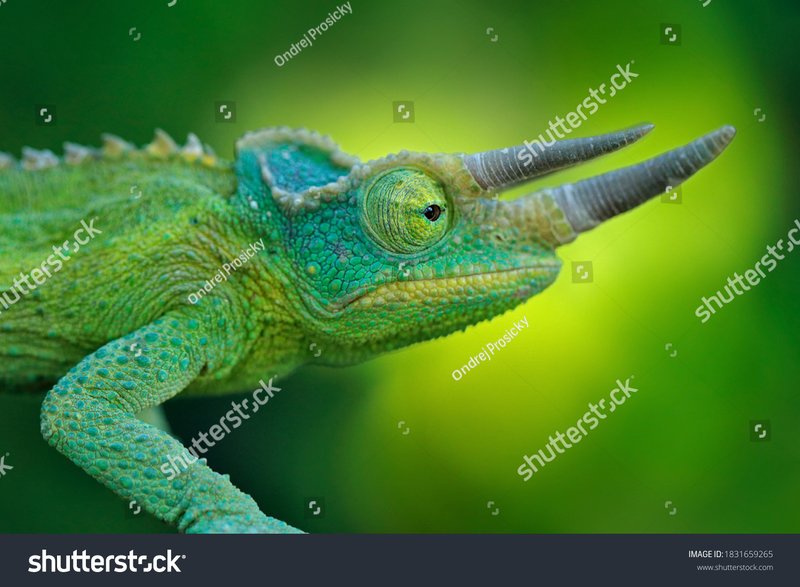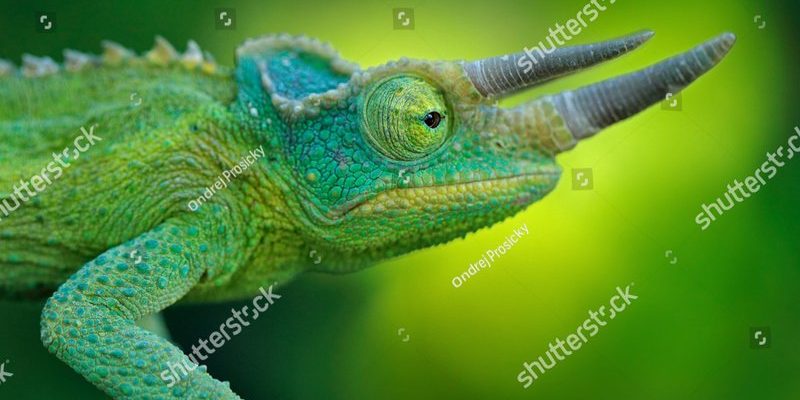
Just like people, reptiles have their preferences for social interactions. While some are friendly and open to sharing space with others, others prefer their own personal space. Understanding the social dynamics of Jackson’s chameleons is key to creating a harmonious environment. Let’s dive into the intricacies of their behavior and explore whether these fascinating creatures can coexist with their reptile counterparts.
Understanding Jackson’s Chameleons
Jackson’s chameleons are native to East Africa and feature a striking array of colors. They have three distinctive horns on their heads, which also contributes to their unique look. This species is primarily solitary in the wild, often using their stunning colors for communication, camouflage, and even temperature regulation.
So, why does this matter when you’re thinking about keeping Jackson’s chameleons with other reptiles? It’s crucial because their natural instincts often guide their behavior. They are not social animals by nature, and while they might tolerate other reptiles, they are unlikely to thrive in a communal setting. Here’s the essential thing: if you’re planning to house them with other reptiles, be prepared for some challenges.
Social Behavior of Jackson’s Chameleons
Chameleons, including Jackson’s, are generally solitary creatures. They tend to prefer being alone rather than in groups. This solitary behavior is part of their survival strategy in the wild, where being alone helps them avoid becoming easy targets for predators.
When you mix Jackson’s chameleons with other reptiles, it can lead to stress for all parties involved. Imagine being in a crowded room where everyone is competing for attention—it’s overwhelming, right? Chameleons don’t enjoy that type of chaos. They may react by becoming aggressive or overly anxious.
While some reptiles are social and thrive in groups, Jackson’s chameleons prefer to keep to themselves. If you introduce a new reptile into their environment, there’s a chance they might react negatively, which can lead to stress-related health issues. That’s something you definitely want to avoid.
Potential Risks of Housing Jackson’s Chameleons with Other Reptiles
Keeping Jackson’s chameleons with other reptiles can lead to several risks you should consider. First, there’s the risk of stress. Stress can manifest in various ways, such as loss of appetite, lethargy, and even aggressive behavior.
Additionally, different species have unique habitat requirements. What’s perfect for one reptile might not be suitable for another. For instance, temperature and humidity levels can vary significantly between species. If you’re trying to create a comfortable space for everyone, you could end up compromising the needs of your chameleon.
Lastly, there’s the concern of potential health issues. Jackson’s chameleons can be susceptible to respiratory infections if they share space with reptiles that carry different bacteria or viruses. You definitely don’t want to introduce that risk into your chameleon’s environment.
Creating a Suitable Environment for Jackson’s Chameleons
If you’ve decided that a Jackson’s chameleon is the right pet for you, it’s vital to create the perfect habitat. This means giving them all the right conditions to thrive on their own. Here’s what you need to focus on:
1. Enclosure Size: Jackson’s chameleons need ample vertical space to climb. A tall terrarium is essential as they love to explore their surroundings.
2. Temperature Control: They prefer a basking spot of around 80-90°F, with a cooler area of 70-75°F. Making sure that these temperature zones are well-defined is crucial.
3. Humidity Levels: Since they come from a humid environment, maintaining humidity levels between 50-70% is important. Regular misting can help with this.
4. Hiding Spots: These chameleons need places to hide and feel secure. Branches, foliage, and hiding spots can help them feel safe and reduce stress.
Creating an environment tailored specifically for Jackson’s chameleons means a happier, healthier pet. It’s all about crafting a space that meets their needs as solitary creatures, rather than trying to fit them into a more social setting with other reptiles.
Alternatives to Housing Jackson’s Chameleons with Other Reptiles
If you love reptiles and want to have more than just Jackson’s chameleons, there are certainly alternatives! Instead of trying to house them with other reptiles, consider creating a separate habitat for your additional pets.
You could opt for a different type of chameleon. Some species, like the veiled chameleon, might handle social situations a bit better. Just be aware of their specific needs and temperament.
Another option is to explore pet reptiles that thrive in groups, like certain species of geckos or anoles. These reptiles are often more social and can be housed together comfortably, which gives you the reptile community vibe without compromising the needs of your Jackson’s chameleon.
Ultimately, housing reptiles together requires thoughtful planning and consideration. You want to ensure every pet’s needs are met, creating a happy home for everyone involved.
The Final Word on Jackson’s Chameleons and Other Reptiles
So, can Jackson’s chameleons get along with other reptiles? The short answer is: not really. They are solitary creatures that thrive on their own, and introducing them to other reptiles can lead to stress and health issues. Every reptile has its own personality and social needs, and Jackson’s chameleons don’t align well with a social living situation.
Creating a tailored habitat that meets their specific needs is essential to keeping them healthy and happy. If you’re looking to expand your reptile family, consider alternative species that are more social or provide separate habitats for each type of pet. This way, you can enjoy the beauty of Jackson’s chameleons without compromising their well-being.
Ultimately, remember that the goal is to create a peaceful, balanced environment for your reptiles. Focus on their needs, and you’ll see happier pets and a thriving home.

